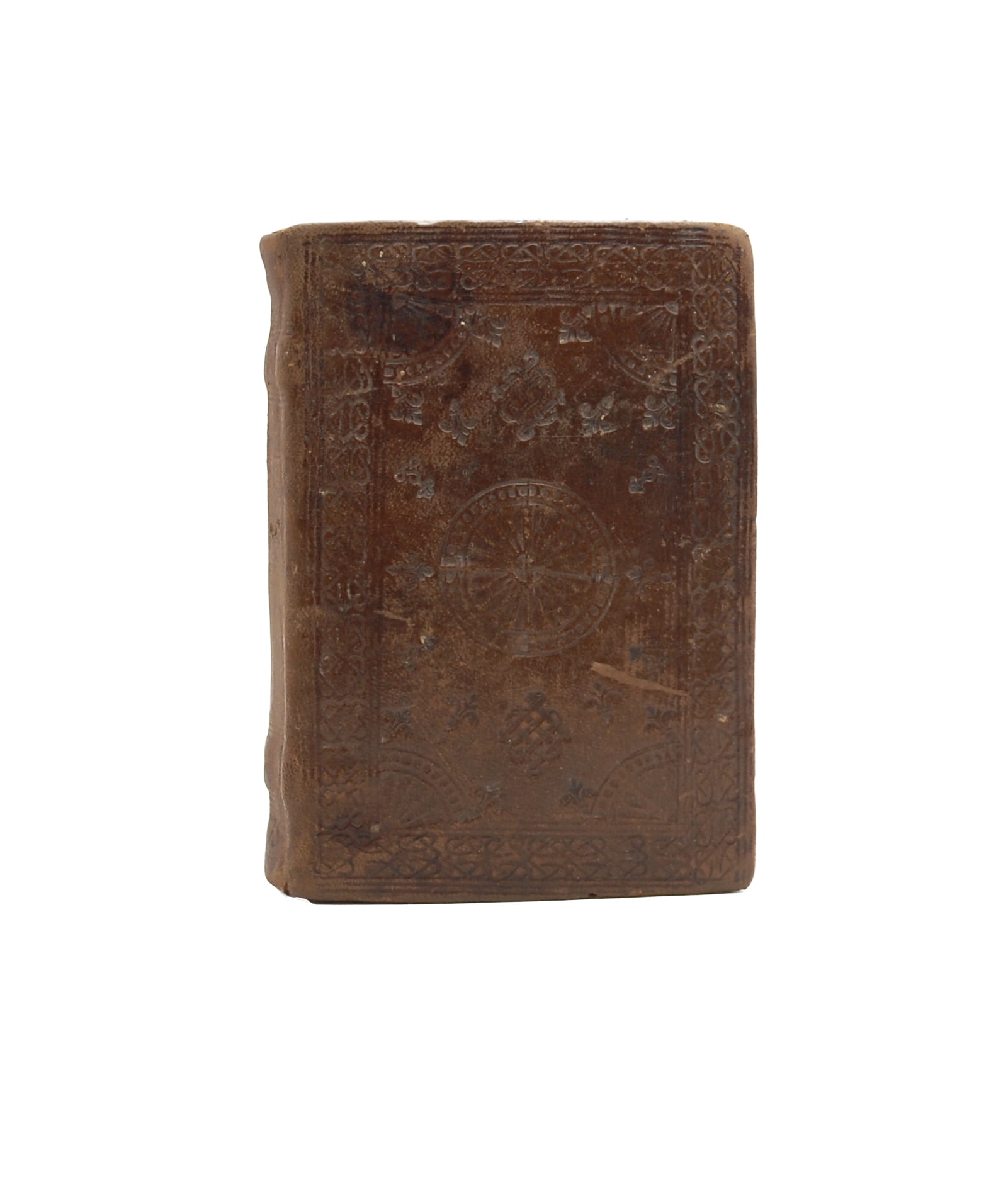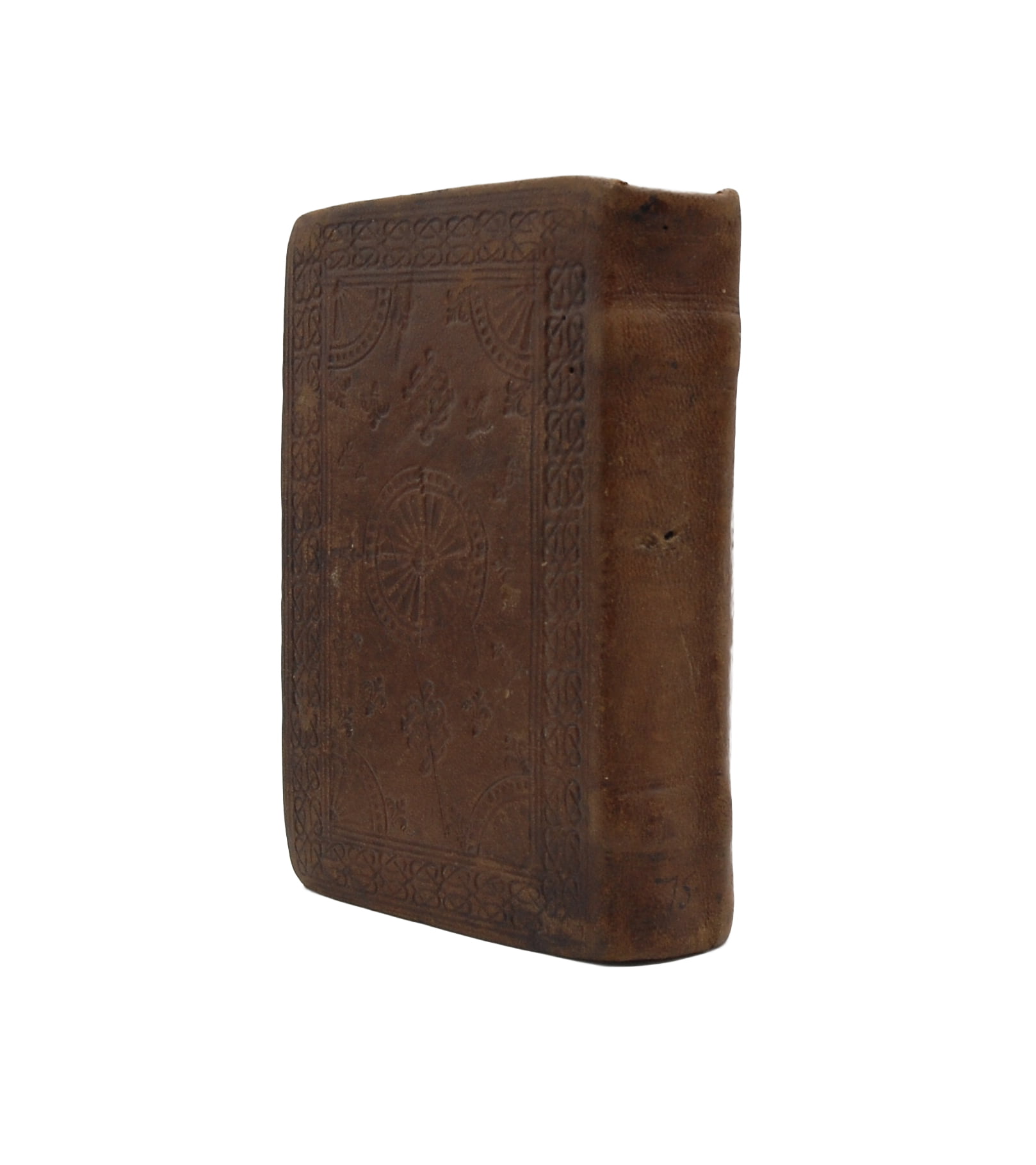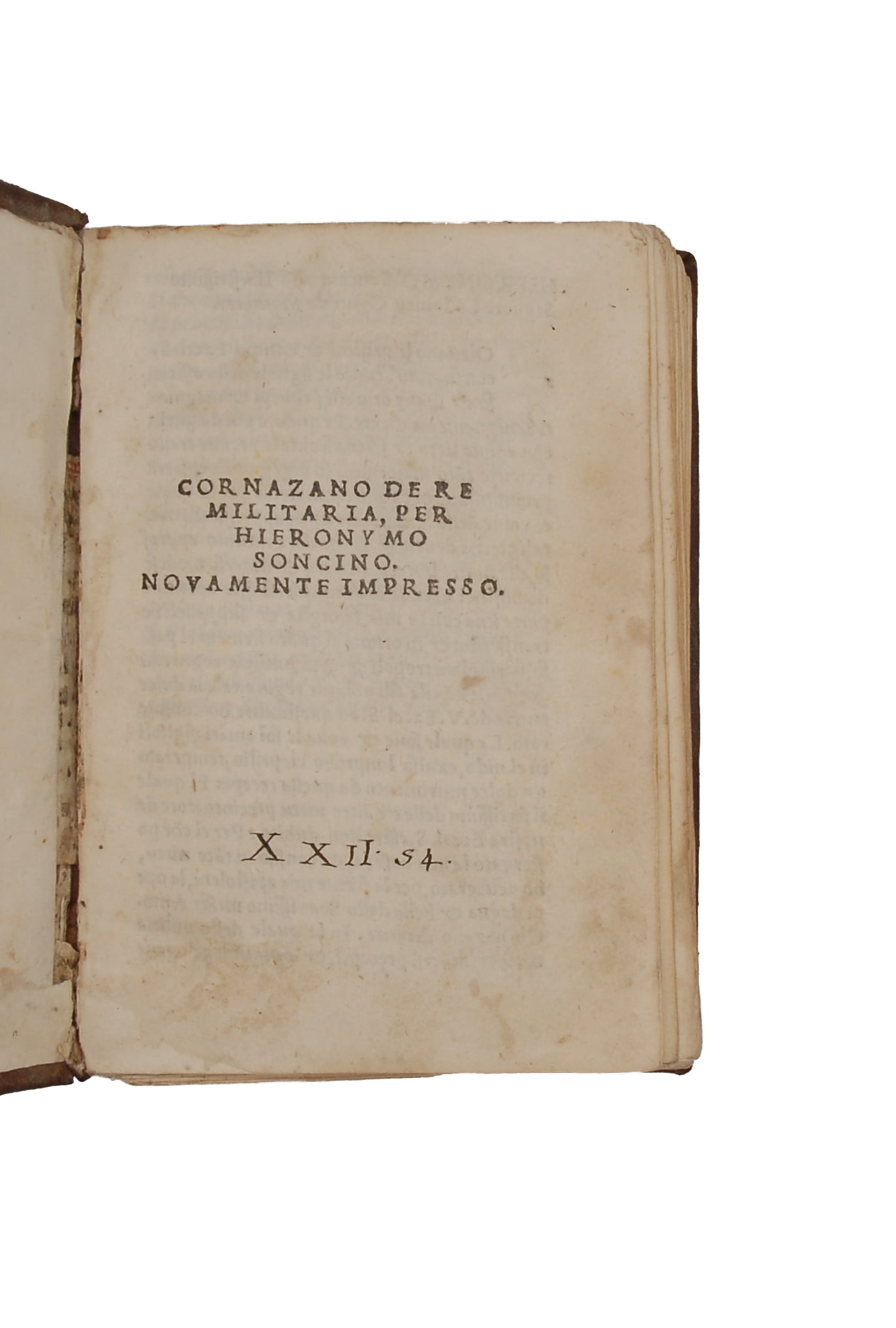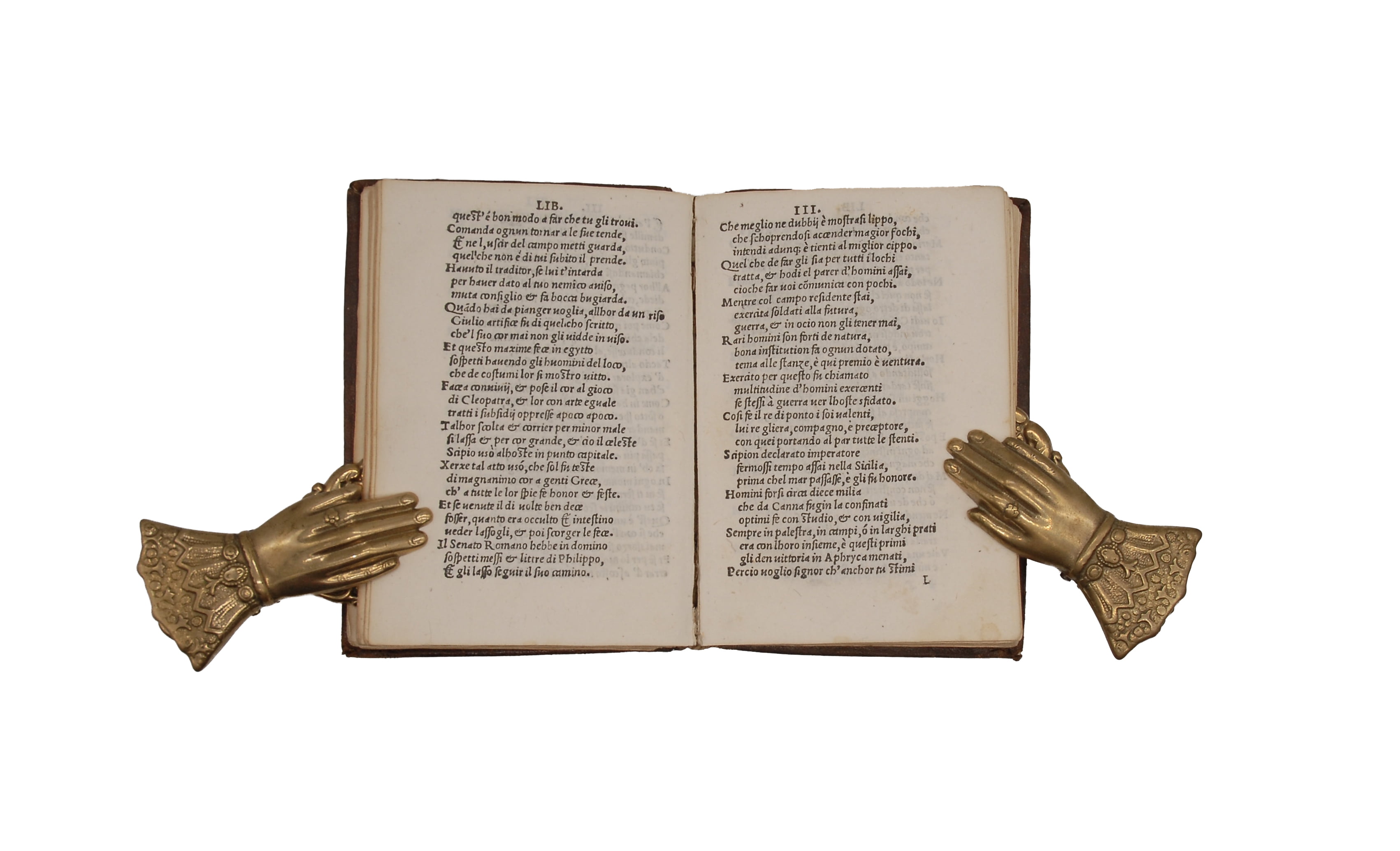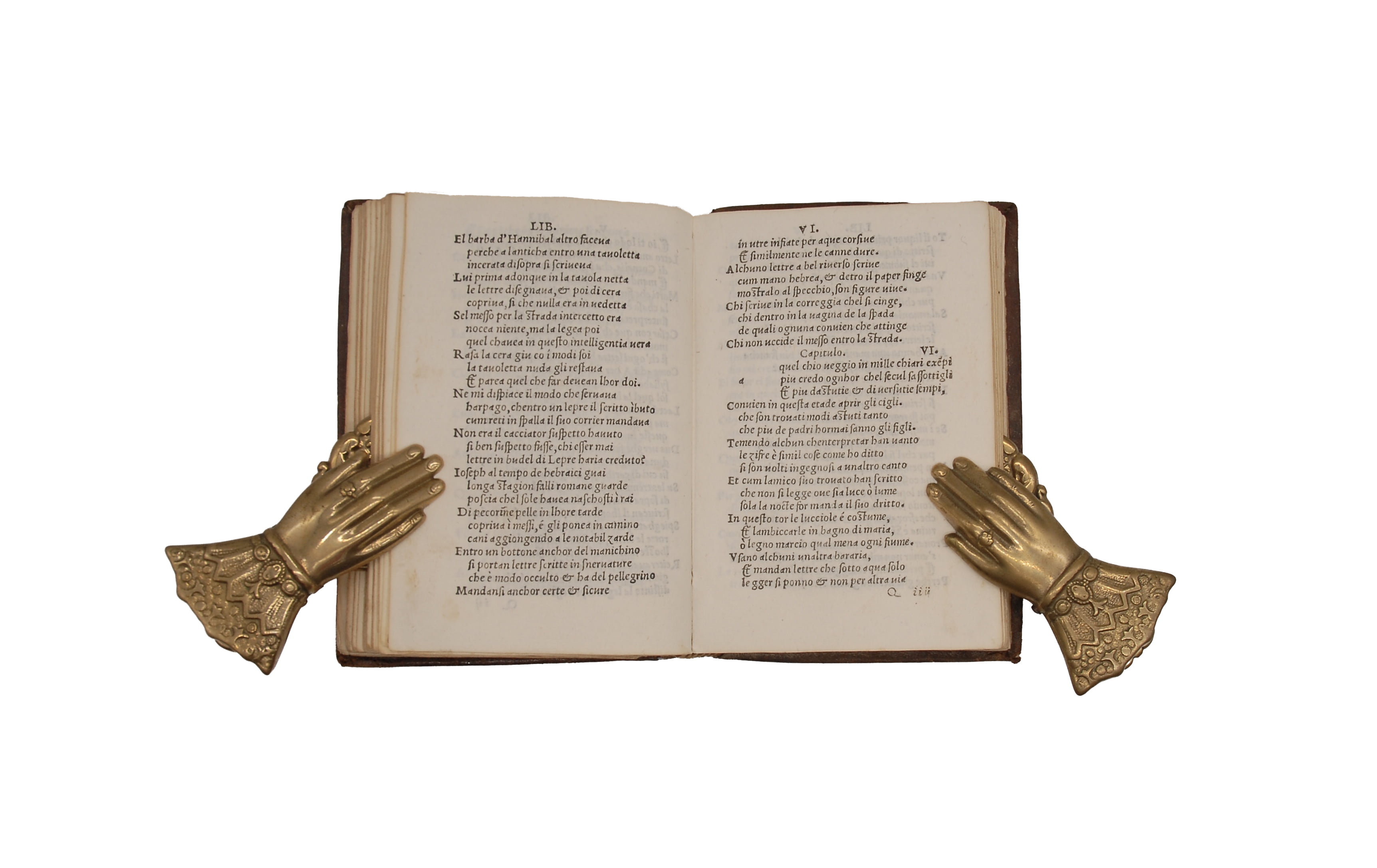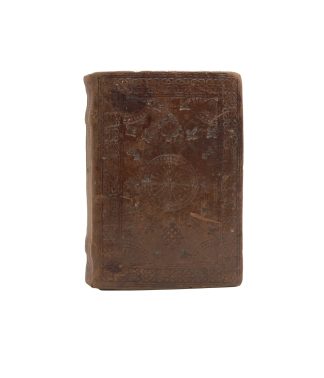CORNAZANO, Antonio
MOST UNUSUAL CONTEMPORARY BINDING
De re militaria
Ortona, Hieronimo Soncino, 1518£10,500.00
8vo. 94 unnumbered ll., A4 B-I8 K4 L-Z8 AA8 BB10. Italic letter, little Roman. T-p thumb marked at lower and outer margins, small tear from lower gutter, occasional thumb marks, minor ink stain to lower edge of M1, the odd marginal spot. A very good, well-margined copy in most unusual, unsophisticated contemporary calf, lacking ties, C15 rubricated ms. used as spine lining just visible, double blind ruled, outer border with interlacing ropework in blind, centre panel with blind-stamped fan tools to corners, four forming a circular centrepiece, surrounded by fleurs-de-lis, mudejar tools, and unusual three-leafed clovers, two raised bands, extremities a little scuffed, and corners a bit bumped, small worm hole to spine and at tail of upper cover. C16 ms. ‘Di Guido Cornio et Segha(?)’, later ms. ‘25’ and stamped ‘20’ to ffep, early ms. casemark ‘X XII 53’ and ‘X XII 54’ to front pastedown and t-p.
A distinctive, naif and unusual binding probably produced near Ortona, Abruzzo, around the time the book was printed. This is appears to be one of very few copies still in a contemporary binding. The binding tools are crude and the style simple when compared with the work of the great binding centres but it is rare to find such a charming, unsophisticated example of such provincial work.
An excellent copy of the second Soncino edition of this important work on the art of war, quoted by Machiavelli. ‘Less common than the first Pesaro edition of 1507’ (Manzoni). This is one of only six works produced by the Jewish printer Gershom Soncino (d. c.1537) in Ortona, then governed by the Spanish viceroys, and one of the few in the vernacular. The dedication to Count Luigi del Montorio requested protection to settle his press in Naples. ‘Jews were banned from the territories of the Kingdom of Naples […] Most probably, Gershom was granted leave to settle in Ortona for his professional printing skill and given his acquaintance with important Roman personalities’ (Campanini, 44). Antonio Cornazano (1430-c.1483) was a prolific author on subjects as varied as dance and proverbs. In blank verse c.1476, ‘De re militaria’ was first published in 1493. Soncino’s typographical layout reprised the cursive octavo of the Aldine ‘enchiridion’; rated as a sophisticated edition, it was also more expensive than its similar counterparts (Nuovo, 70). Cornazano was the first to adapt in print Vegetius’s 4th-century ‘De re militari’—the only ancient work on Roman warfare to have survived intact—which he adjusted to the changing needs of early modern military practice. His work discussed the ideal soldier (literacy, endurance, virtue), the importance of good horses (where they breed in Italy, their features, how to shoe them, how to treat their ailments), ancient and modern armour, dos and don’ts in war (never destroy churches, never start wrong wars), the virtues of the good captain (in battle, after victory), spies, and the circulation of fake news to scare the enemy. Fascinating is the section on cryptography, as Cornazano provides recipes for inks (soaked fireflies, salarmoniaco, milk-based only visible if sprinkled with coal), techniques to read letters underwater or against the fire, and the use of images following the ancient Egyptian tradition.
Rare. Only Newberry and UCLA copies recorded in the US.
Cockle 505 (1493 ed.); BM STC It., p.198; Manzoni, Annali tip. dei Soncino, p.153. Not in Brunet. S. Campanini, ‘Le prefazioni, le dediche e i colophon di Gershom Soncino’ (31-58) and A. Nuovo, ‘La parte del volgare nel catalogo di Gershom Soncino’, in L’attività editoriale di Gershom Soncino, 1502-27 (1997).In stock


